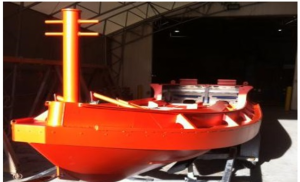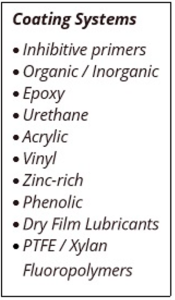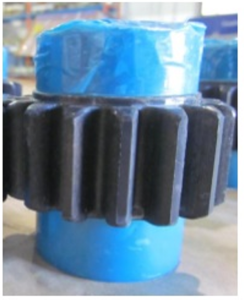Paint & Coatings
Corrosion-Resistant Coatings
Coatings or ‘paint’ are the most common way to protect steel surfaces from corrosion and oxidative attack in its environment.
Once the metal surface has been cleaned and prepared to specification, paint and coatings can be applied to ‘finish’ the metal.
Coatings form a protective film or barrier isolates the surface from environmental elements, chemicals and other contaminants resulting in increased service life, reduced maintenance and less downtime.
NACE CIP Expertise
Our coating experts are NACE International trained and certified to produce quality coatings to industry standards.
They ensure that all surfaces are properly prepared, masked as required, that manufacturer guidelines are followed. Any and all in-process inspections and testing are performed, and all specifications are met.
Our coating systems have provided many years of service for an array of equipment and structures in numerous environments
Coating Systems
The name of a coating is usually that of its principal resin; the type is determined by its mechanism.
For example, steel surfaces can be protected by different mechanisms and types of coatings.
- Barrier coatings form an impervious barrier to keep moisture and liquids away from the steel surface.
- Sacrificial coatings, rich in zinc, protect steel surfaces by sacrificing zinc.
- Inhibitive coatings (usually primers) have components that react and passivate the steel surface to reduce corrosion.
Redi-Strip produces a wide selection of coating systems to specification, including single- and multi-coat, convertible and non-convertible, polymer or heat cured, and more.
Application methods include conventional air spray, airless spray and hand striping.
Selective Masking
Masking excludes specific areas from treatment during a metal finishing process.
Often performed prior to coating and blasting operations, masking is also used with chemical surface treatments.
A gear, for example, may require the shaft to be masked so only the teeth are selectively phosphated. Flange faces, threaded ports and sensitive areas may be masked prior to media blasting to protect sealing surfaces and dimensional tolerances.
Masking is similarly used in coating operations to also produce clean edges and finishes.
At Redi-Strip, all items are meticulously hand-masked to customer specifications.



